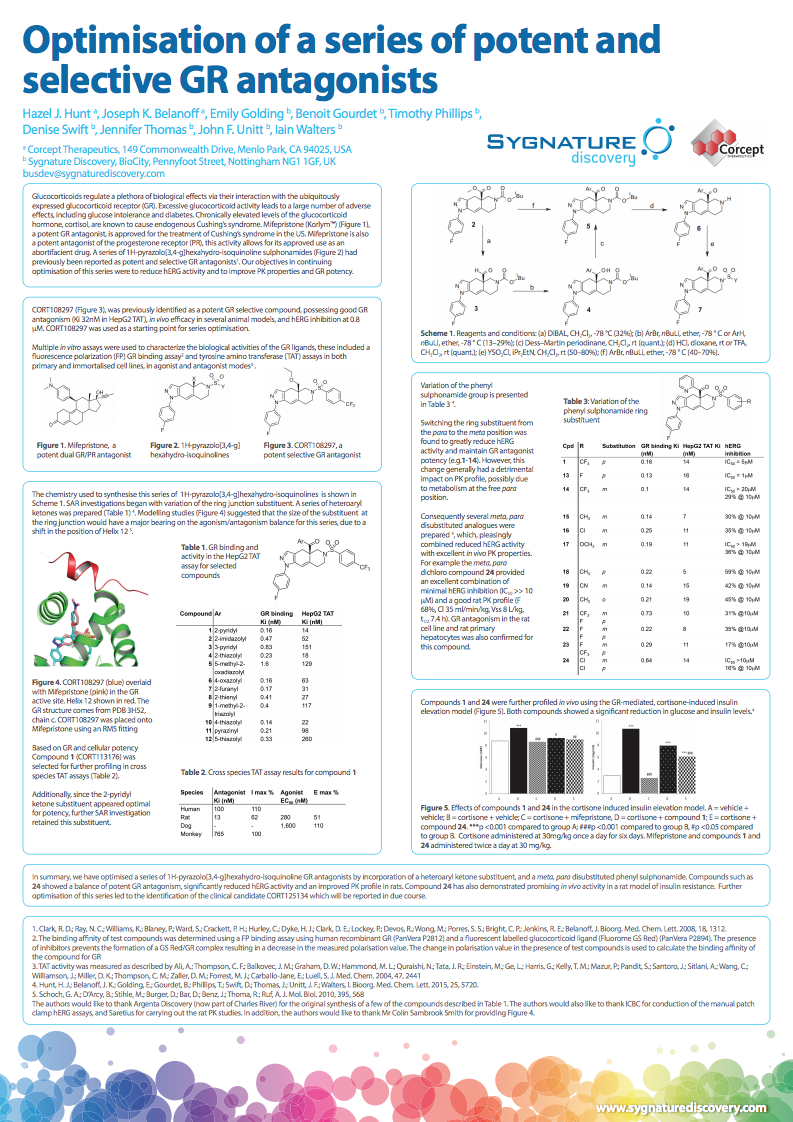Optimisation of a Series of Potent and Selective GR Antagonists
The Role of Glucocorticoids and Mifepristone in Cushing’s Syndrome Treatment: Optimising Selective GR Antagonists
Abstract:
Glucocorticoids play a crucial role in regulating various biological processes through their interaction with the widely expressed glucocorticoid receptor (GR). However, excessive glucocorticoid activity can lead to detrimental effects, such as glucose intolerance and diabetes. Chronic elevation of the glucocorticoid hormone, cortisol, is associated with endogenous Cushing’s syndrome.
To address this condition, Mifepristone (Korlym™) (Figure 1), a potent GR antagonist, has gained approval for Cushing’s syndrome treatment in the US. Mifepristone also acts as an antagonist of the progesterone receptor (PR), making it an approved abortifacient drug.
Previously, a series of 1H-pyrazolo[3,4-g]hexahydro-isoquinoline sulphonamides (Figure 2) were reported as potent and selective GR antagonists. Our research aims to optimise this series further by reducing hERG activity and enhancing pharmacokinetic (PK) properties and GR potency. These improvements hold promise for more effective treatments for Cushing’s syndrome and related conditions, providing potential relief to affected individuals.

